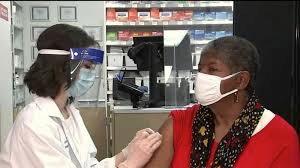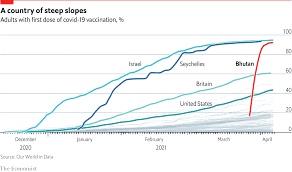 It is axiomatic that without attaining "herd immunity" that involves vaccinating 80 percent of the U.S. population, COVID will persist. The larger the proportion of our population that remains susceptible, the higher is the risk of variants both introduced and arising by spontaneous mutation. Given that children under the age of 14 will probably not be vaccinated until the end of summer, approximately 15 percent of our population will remain susceptible. If a substantial proportion of eligible adults decline to be vaccinated, achieving solid herd immunity will be an unattainable goal.
It is axiomatic that without attaining "herd immunity" that involves vaccinating 80 percent of the U.S. population, COVID will persist. The larger the proportion of our population that remains susceptible, the higher is the risk of variants both introduced and arising by spontaneous mutation. Given that children under the age of 14 will probably not be vaccinated until the end of summer, approximately 15 percent of our population will remain susceptible. If a substantial proportion of eligible adults decline to be vaccinated, achieving solid herd immunity will be an unattainable goal.
There are indications that attitudes mitigating against vaccination are softening. During August 2019 before COVID vaccines became available, polls suggested that 70 percent of those surveyed expressed either a wait-and-see response or averred that they were not likely to receive a vaccine. By early April, almost 71 percent of respondents stated that they were either likely to be vaccinated or had received an mRNA vaccine.
 Surprisingly the pause in administration of the Johnson & Johnson vaccine has not apparently created uncertainty or exacerbated hesitancy. Among many respondents, there was no measurable effect arising from the FDA two-week moratorium on administration to review data on post-vaccination clotting reactions attributed to this product in the U.S. and the E.U. The problem that affected approximately eight recipients out of eight million doses in the U.S. strengthened confidence in the regulatory process. With increasing supplies of the two mRNA vaccines (Pfizer and Moderna) and restoration of the J&J single-dose product, it is apparent that availability of vaccines will no longer represent a restraint to achieving broader immunization.
Surprisingly the pause in administration of the Johnson & Johnson vaccine has not apparently created uncertainty or exacerbated hesitancy. Among many respondents, there was no measurable effect arising from the FDA two-week moratorium on administration to review data on post-vaccination clotting reactions attributed to this product in the U.S. and the E.U. The problem that affected approximately eight recipients out of eight million doses in the U.S. strengthened confidence in the regulatory process. With increasing supplies of the two mRNA vaccines (Pfizer and Moderna) and restoration of the J&J single-dose product, it is apparent that availability of vaccines will no longer represent a restraint to achieving broader immunization.
Acceptance by communities of color has improved following the efforts of local physicians and making vaccines more readily available to those that lack mobility. The problem now emerging is the demographic that is opposed to the vaccine, citing either religious or political justification. Further outreach will be required to convince deniers of the need to be vaccinated and to assist the hesitant to recognize both the safety and the communal need to establish a high level of protection.
The CDC recommendation issued on April 27th that vaccinated individuals do not have to wear masks while outside is an inducement to be vaccinated. The quicker our population can be immunized the sooner we can restore the economy and return to a semblance of our life before COVID.